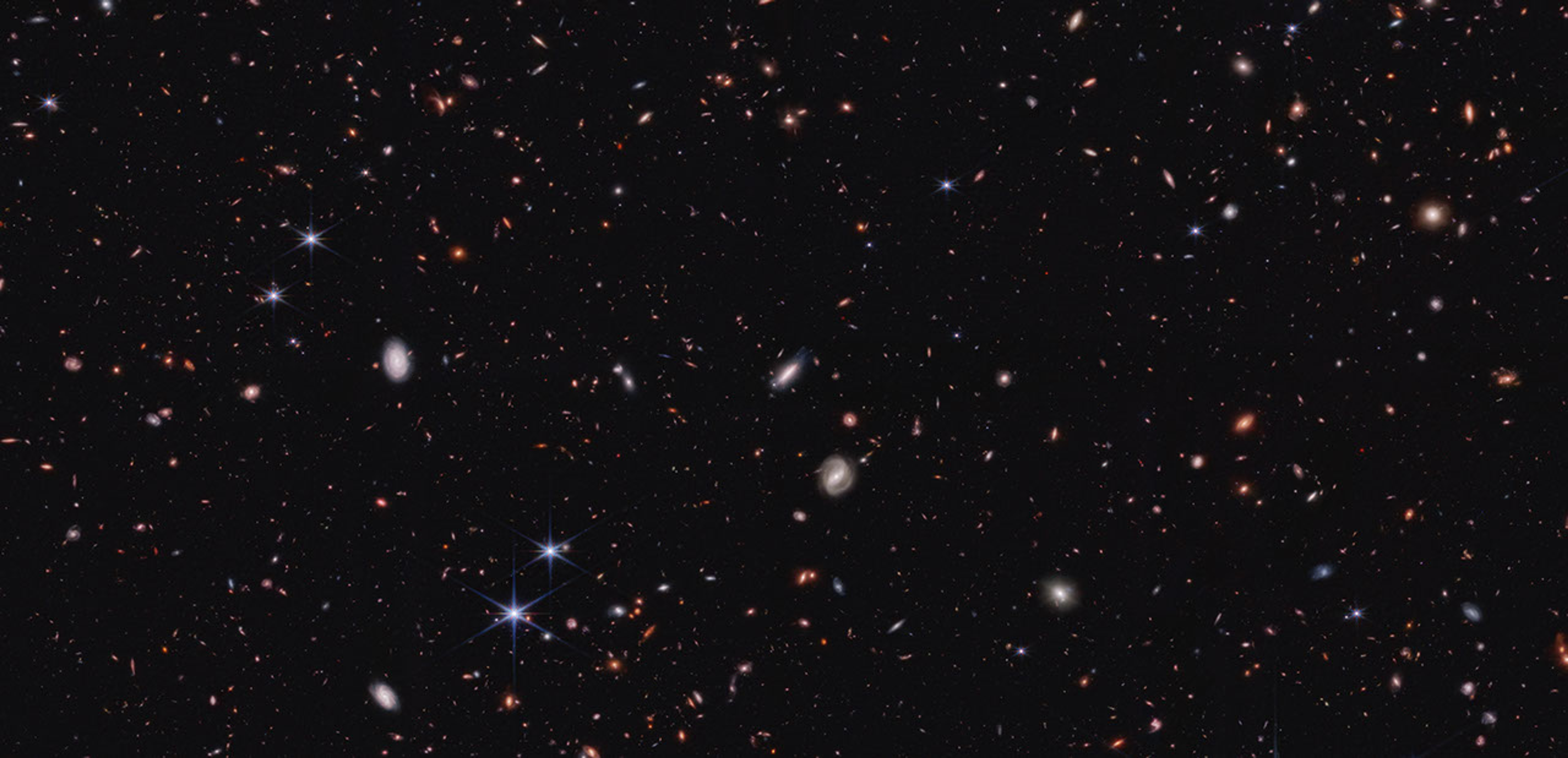1 min read
CEERS Crop (NIRCam Image)

This image shows a small portion of the field observed by NASA’s James Webb Space Telescope’s NIRCam (Near-Infrared Camera) for the Cosmic Evolution Early Release Science (CEERS) Survey. It is filled with galaxies. The light from some of them has traveled for over 13 billion years to reach the telescope.
Some galaxies appear to have grown so massive, so quickly, that simulations couldn’t account for them. However, a new study finds that some of those early galaxies are in fact much less massive than they first appeared. Black holes in some of those galaxies make them appear much brighter and bigger than they really are.
Read more about the full CEERS image here.
About the Object
- R.A. PositionR.A. PositionRight ascension – analogous to longitude – is one component of an object's position.14:19:46
- Dec. PositionDec. PositionDeclination – analogous to latitude – is one component of an object's position.+52:53:37
- ConstellationConstellationOne of 88 recognized regions of the celestial sphere in which the object appears.Boötes
- DimensionsDimensionsThe physical size of the object or the apparent angle it subtends on the sky.Image is about 4.2 arcminutes across.
About the Data
- Data DescriptionData DescriptionProposal: A description of the observations, their scientific justification, and the links to the data available in the science archive.
Science Team: The astronomers who planned the observations and analyzed the data. "PI" refers to the Principal Investigator.This image was created with Webb data from proposal: 1345 (S. Finkelstein). Image Processing: Alyssa Pagan (STScI).
- InstrumentInstrumentThe science instrument used to produce the data.NIRCam
- Exposure DatesExposure DatesThe date(s) that the telescope made its observations and the total exposure time.20-21 Dec 2022, 24 Dec 2022
- FiltersFiltersThe camera filters that were used in the science observations.F115W, F150W, F200W, F277W, F356W, F444W
- Object NameObject NameA name or catalog number that astronomers use to identify an astronomical object.CEERS Survey, Extended Groth Strip
- Object DescriptionObject DescriptionThe type of astronomical object.Deep field survey
- Release DateAugust 26, 2024
- Science ReleaseWebb Finds Early Galaxies Weren’t Too Big for Their Britches After All
- CreditImage: NASA, ESA, CSA, Steve Finkelstein (UT Austin)

These images are a composite of separate exposures acquired by the James Webb Space Telescope using the NIRCam instrument. Several filters were used to sample wide wavelength ranges. The color results from assigning different hues (colors) to each monochromatic (grayscale) image associated with an individual filter. In this case, the assigned colors are: Blue: F115W+F150W Green: F200W + F277W Red: F356W + F444W
Share
Details
Laura Betz
NASA’s Goddard Space Flight Center
Greenbelt, Maryland
laura.e.betz@nasa.gov
NASA, ESA, CSA, Steve Finkelstein (UT Austin)































